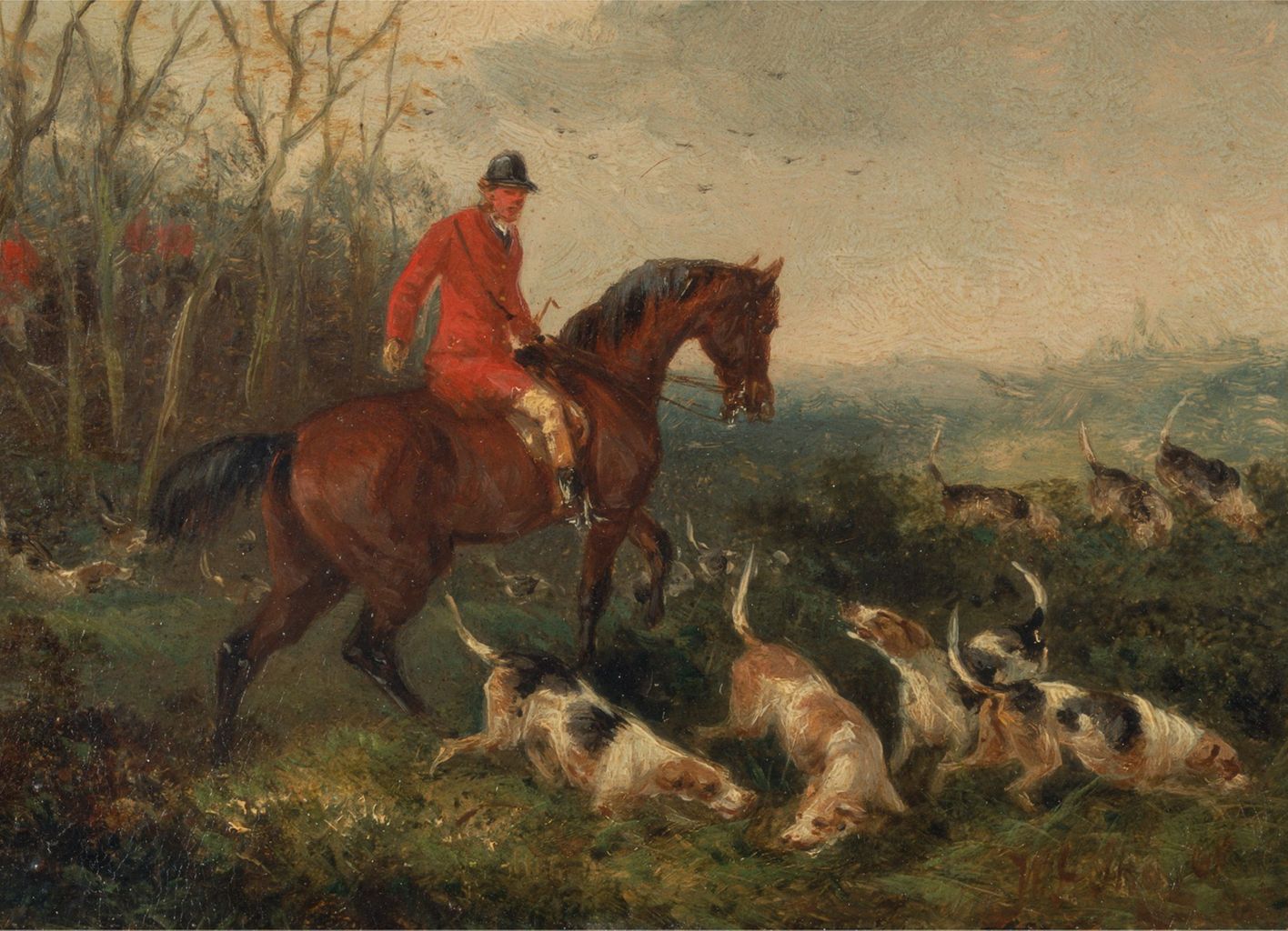Romantic English
Foxhunting: At Cover William J. Shayer RE335017
Foxhunting: At Cover William J. Shayer RE335017
Couldn't load pickup availability
Ah, what a magnificent piece of artistry we have before us! This oil painting reproduction, "Foxhunting: At Cover" by the British artist William J. Shayer, immerses us into the heart of the 19th-century English countryside, where the grand tradition of foxhunting unfolds with all its regal splendor. Painted in 1863, the scene captures the thrill, the tension, and the sheer pageantry of the hunt as the participants prepare to flush out their quarry.
At the very center of the composition, we see a lone rider dressed in the traditional scarlet hunting coat—a bold splash of red that draws the eye immediately. His posture, though relaxed, conveys an air of readiness and command. Seated atop a handsome, muscular chestnut horse, the rider's body leans slightly forward, as if in anticipation of the chase that is about to begin. One can almost hear the soft snorts of the horse, feel the tension in its muscles as it stands poised to gallop at a moment’s notice.
The horse, painted with remarkable attention to anatomical detail, is a creature of power and grace. Its coat gleams with an auburn richness, subtly illuminated by the soft natural light that Shayer has masterfully infused into the scene. Its mane and tail appear to be caught in a gentle breeze, giving a sense of movement to an otherwise still moment. The relationship between the rider and his steed is one of mutual trust and understanding, an unspoken communication between man and horse that embodies the very essence of foxhunting.
In the foreground, we see the true stars of the hunt—the hounds. A lively pack of English foxhounds scurries and sniffs around, their noses low to the ground, searching for the scent of the elusive fox. The hounds are rendered with a dynamic sense of motion, their sleek, muscular bodies captured in mid-action, as if they could burst into full pursuit at any second. The variety of their coats, in shades of white, brown, and black, provides a wonderful visual contrast against the green, lush undergrowth of the countryside.
The background, though muted and understated, is essential to the composition’s overall atmosphere. The woodland behind the rider, a mixture of leafless trees and tangled branches, suggests the season is late autumn or early winter—a time when the crispness in the air would sharpen both the senses and the thrill of the hunt. The horizon, painted with soft, diffuse light, stretches into the distance, giving the scene a sense of expansiveness, a connection between the earth and sky.
As we peer deeper into the painting, we notice that the woods are not entirely still—there are distant figures, barely discernible, dressed in similar hunting attire. They appear to be riding deeper into the cover, perhaps scouting the terrain or positioning themselves for the moment when the fox breaks from its hiding place. This subtle detail adds to the narrative depth of the painting, suggesting a larger, communal effort in the hunt.
The palette used by Shayer is one of natural, earthy tones, perfectly suited to the subject matter. The rich greens and browns of the landscape blend seamlessly with the grey sky above, providing a harmonious backdrop for the striking red of the rider's coat and the hounds' dappled forms. The brushstrokes, though delicate, carry a sense of energy and movement, especially in the depiction of the hounds and the natural landscape. It is as though Shayer has frozen a fleeting moment in time, allowing us to witness this slice of rural life as it unfolds.
Overall, this reproduction captures the majesty and ritual of the foxhunt, a tradition steeped in history and culture. The painting is not merely a celebration of sport, but a reflection of the deep connection between humans, animals, and the natural world in which they exist. Through Shayer’s skilled hand, we are invited to share in the anticipation of the hunt and the beauty of the English countryside, even if only for a moment. Quite splendid, indeed!
Share


